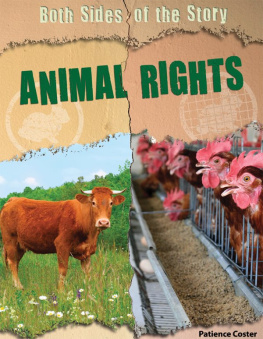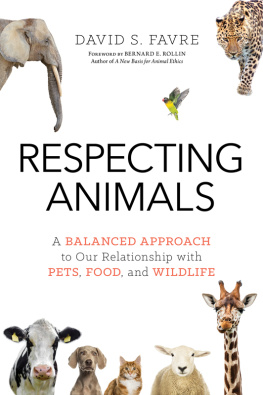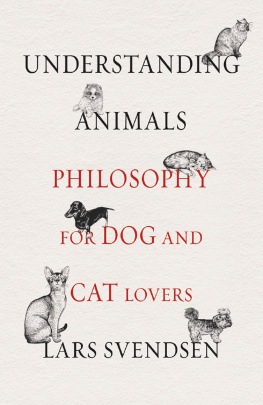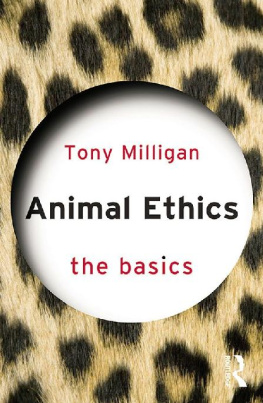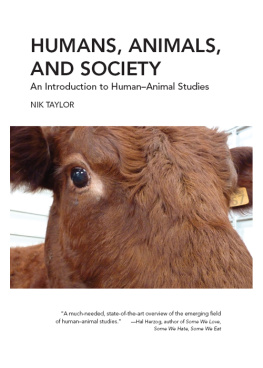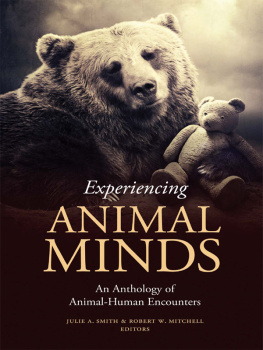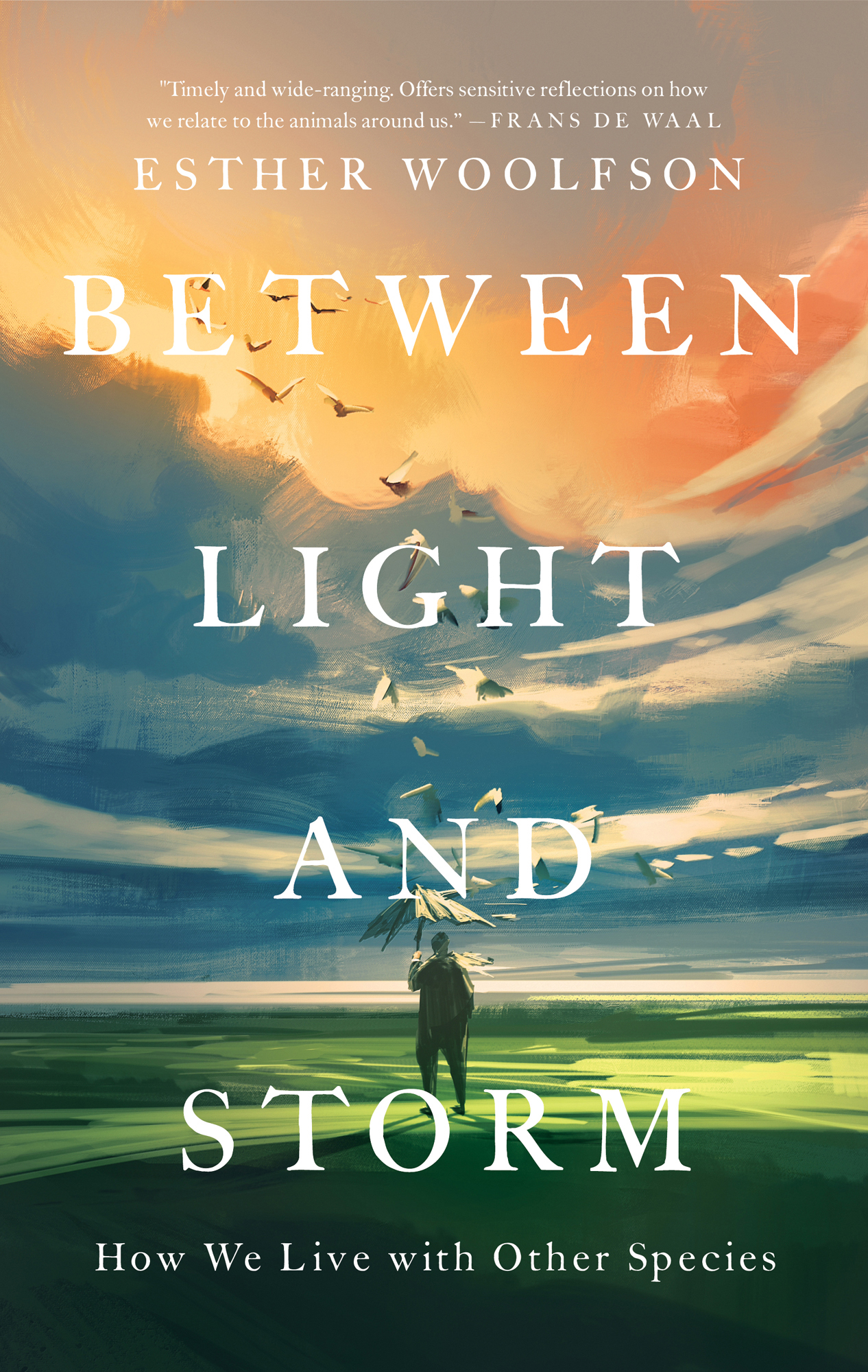Contents
Guide
Timely and wide-ranging. Offers sensitive reflections on how we relate to the animals around us.Frans De Waal
Esther Woolfson
Between Light and Storm
How We Live with Other Species
Elegiac, haunting and piercingly intelligent, Esther Woolfsons exploration of our relationship with other species is sometimes painful to read but her articulacy and lightness of touch, and her own beautifully observed experiences, are a joy. A profoundly moving and important book. Isabella Tree
Between Light and Storm brings together a wealth of literature about humans and other animals [Woolfson] embarks on a calm journey through human philosophy At every turn, Woolfson has an astute remark, whether from Tolstoy or J. D. Salinger. Financial Times
A powerful, poignant, and urgently important reflection on our relations with the non-human world. Immaculately researched and compulsively readable. Charles Foster, author of Being a Beast
We live in a time in which our disrespect for nature is coming back to bite us. Timely and wide-ranging, Esther Woolfsons book offers sensitive reflections on how we relate to the animals around us as well as the animal within. Frans de Waal, author of Mamas Last Hug
This is nature writing in the foraging and fossicking mode, reminiscent of Kathleen Jamie and Barry Lopez. Woolfson ranges widely across disciplines and through time; discursive, informative and always ready to explore a promising byway. She draws on a dizzying array of sources. New Internationalist ****
When turning the pages of Wolfsons spellbinding books, you cant help but wonder what creatures may have been peering over her shoulder as she wrote This intimacy feeds into her new examination of our relationship with the wilder world: from ancient ideas about human exceptionalism in philosophy to the pandemic-spreading consequences of mistreating nature Read and be caught. New Statesman
For all the talk of an animal turn, discussions of animals have today become so filled with jargon and political rhetoric that the creatures themselves often seem reduced to little more than rhetorical tropes. Between Light and Storm by Esther Woolfson is a book that can put the animals back in Animal Studies. The discussions in it are not only beautifully written and rich in historical detail but also filtered through personal reflection and experience. I know of no better introduction to the study of humananimal relations Boria Sax, author of Avian Illuminations: A Cultural History of Birds
To Chicken,
Corvus frugilegus
Spring 19889 December 2019
Colleague, companion, friend.
For the animal shall not be measured by man. In a world older and more complete than ours, they move finished and complete, gifted with the extension of the senses we have lost or never attained, living by voices we shall never hear. They are not brethren, they are not underlings: they are other nations, caught with ourselves in the net of life and time, fellow prisoners of the splendour and travail of the earth.
HENRY BESTON , The Outermost House: A Year of Life on the Great Beach of Cape Cod
I would have liked, once in my lifetime, to communicate fully with an animal. It is an unattainable goal. It is almost painful for me to know that I will never be able to find out what the matter and structure of the universe is made of. This would have meant being able to talk to a bird. But this is a line that cannot be crossed. Crossing this line would be a great joy for me. If you could bring me a good fairy who would grant me one wish, this is the one I would choose.
CLAUDE LVI-STRAUSS
The history of mans efforts to subjugate nature is also the history of mans subjugation by man.
MAX HORKHEIMER
Beginnings
A late October afternoon. Its quiet. The blue light of dusk beyond the windows melts into early darkness. Im in the company of others but Im the only human being here. Im walking from room to room, tidying, putting things in order, preparing for the evening when I notice a smirr of shadow passing over the surface of the kitchen floor. Its faint, just an impression before a glance, a small wisp of something, of blown feather, a dust-ball gusted in a draught. In these old houses, floors have weather of their own: breezes, cyclones, polar easterlies. I follow it closely until I see that its walking, minutely but steadily across the desert expanse of floor, a spider so tiny that she freezes me where I stand, hyper-aware suddenly of my feet, of my own power, my murderous boots. This is a fellow inhabitant of my house, brought in by the cold, the incessant rain. In autumn, they all begin to look for shelter and for food: the house mice, the field mice who will arrive soon, the spiders, large and small, like this one. In summer, houseflies gather, wasps rattle in the window corners. All year, woodlice criss-cross the rooms with determined crustacean tread. There are too, the many creatures I cant see, ones too small for shadows.
This spiders clearly heading somewhere but I know Ill have to interrupt her journey in case, in doing other things, I forget shes there, step on her and end her life. Keeping my eye on her, I tear a page from a small notepad and bend to urge her onto it, her own brilliant yellow, magic-spider-carpet. Instead, she climbs onto my hand and walks about on my fingers for a while until I encourage her onto the paper so that I can carry her to safety, away from me, her only obvious danger. As a representative of my species, by comparison with this creature, Im huge. As a member of my species, I carry the inescapable burden of the long, egregious history of human dealings with the lives of others. As an individual, Im guilty by deed and by association. An almost-invisible spider faces me with myself.
As I hold this other living being on a scrap of paper, I know that there isnt exactly a relationship between her and me but a skein of connections which ties us both into the centre of the questions that have been occupying my mind for a long time, ones I ask now of a member of an arachnid genus and family I cant immediately identify (Linyphiidae? Tegenaria?). What are we doing here together? How, in the light of the hundreds of millions of years of our shared past should I behave towards you and others? Theyre questions anyone might ask themselves from time to time, anyone who lives curiously or anxiously as many of us do now, frequently with bewilderment and anger, often in despair. The first question is easier than the second. We can trace back to where our common origins lie, the progression from the earliest beginnings of life to where we are now, the point where one single species threatens the future of all the rest.
The second question is different, almost too much for one human and one spider, too heavy for the line that connects us both to those common origins, the one we can trace back through history and the stout, enduring certitude of the people who have argued and prayed and postulated through the centuries to ask what were doing and why. It seems part of a long and continuous line which threads back through the chronology of all our lives, tying us to everything we have done and do, the questions strung along it like faceted beads, winking light and darkness.
I carry the spider carefully, one hand round the edge of the paper to stop her from falling. The two of us are so different, in size, components, physiology. We live differently, do things differently. We eat differently, grasp differently, see differently and, were we to kill, we would carry it out differently. For all that, I know us to be the same, sharing far more than just a long and parallel past. One of the things we share is life. That alone should be enough to bestow on us both a wild, determined equality, this minute scrap of living entity and me. The other thing we share is occupying our own designated place, determined by the species we belong to, on the planet on which we live.


